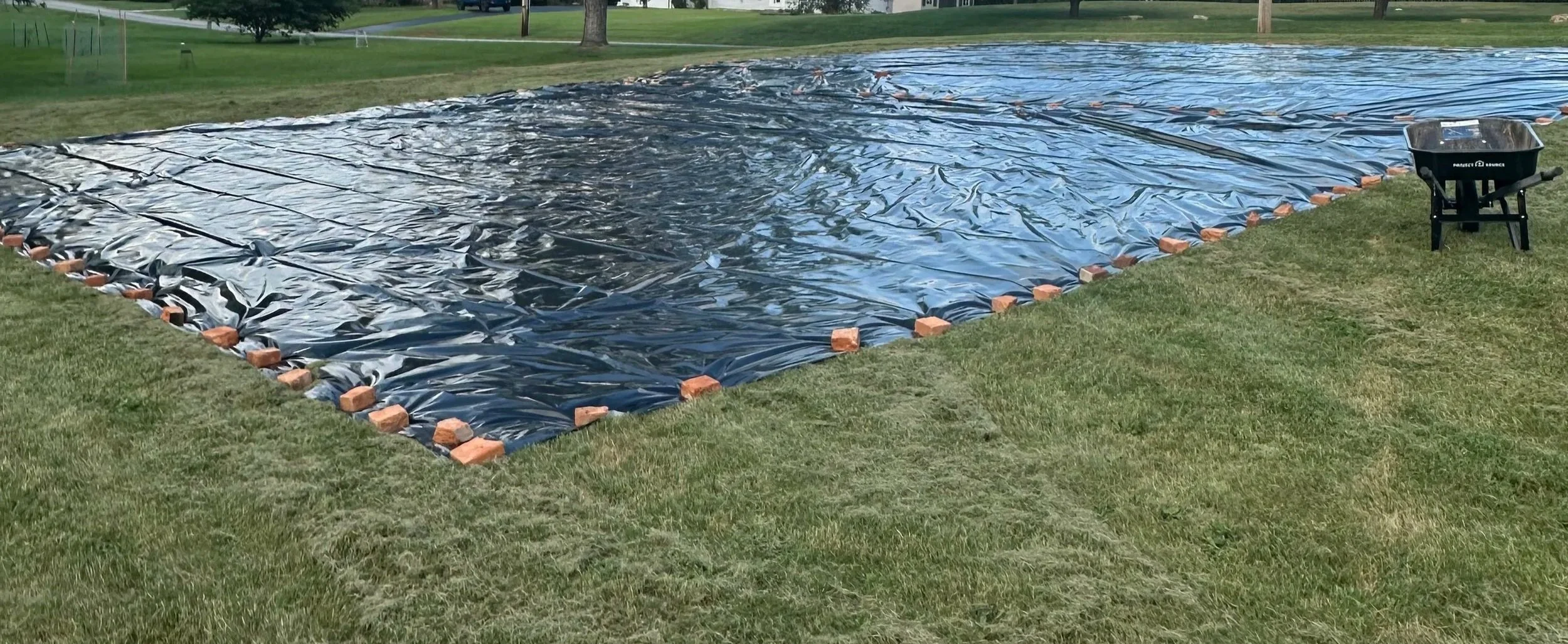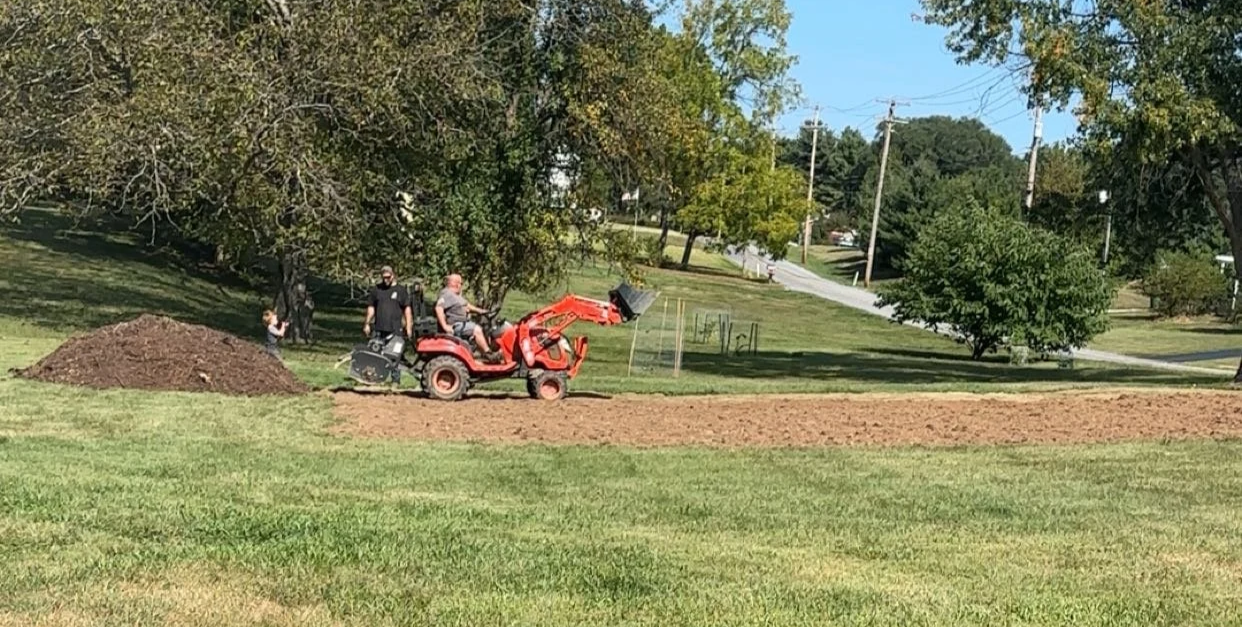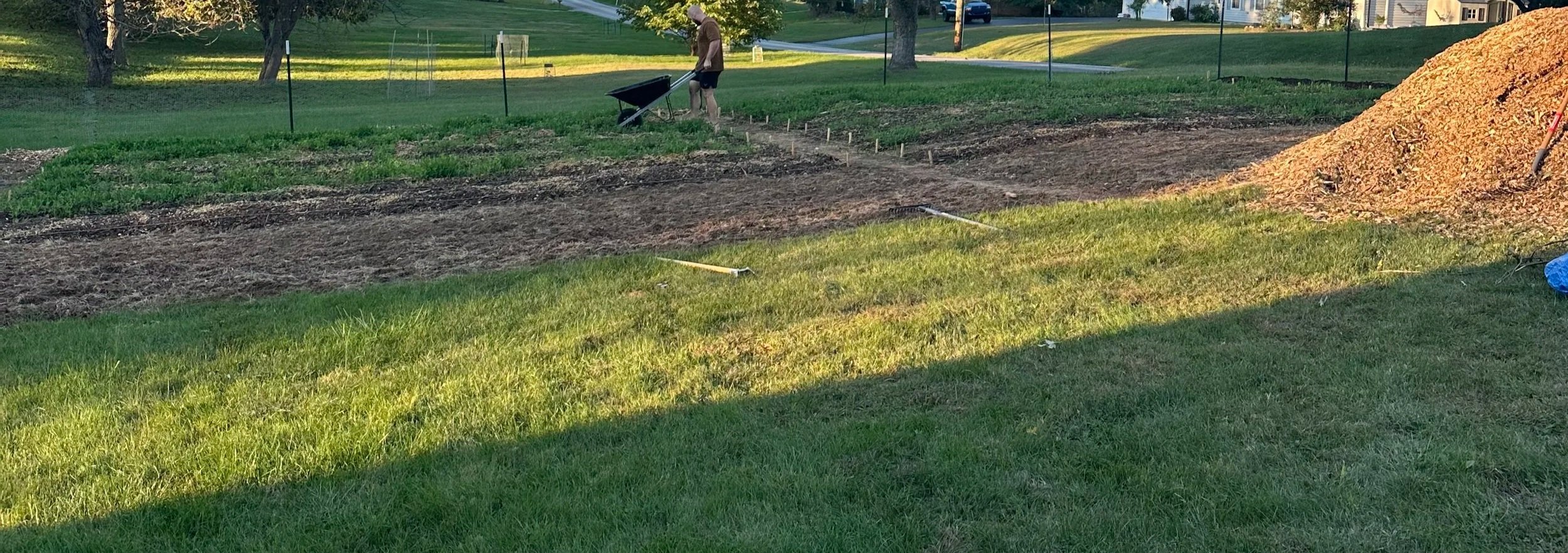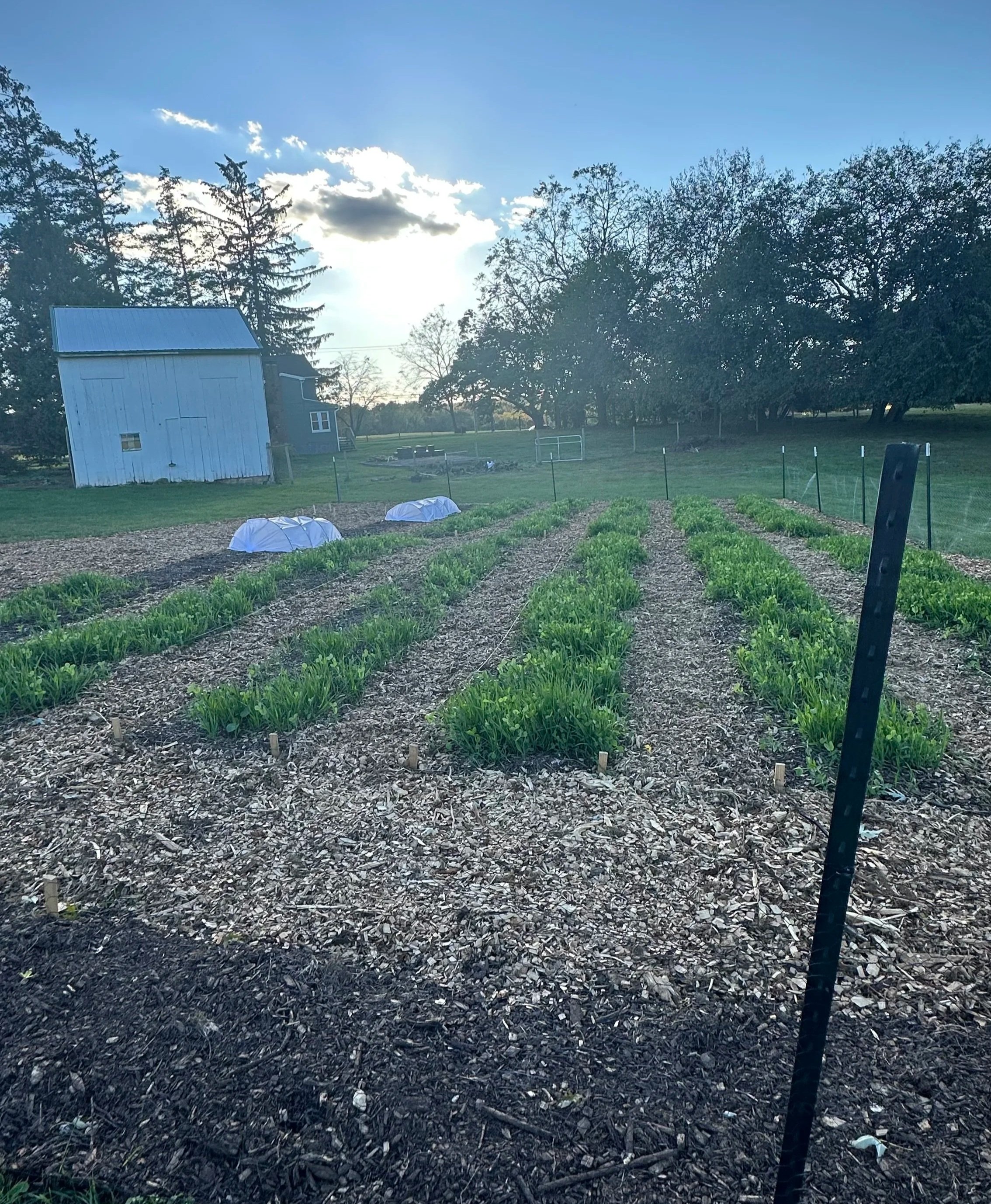Preparing for the 2026 Season
A lot goes into preparing for spring, especially when starting a garden from scratch. This summer and fall has been bringing my vison to life by taking our empty side yard and turning into the 2026 flower beds.
We started this process by using a silage tarp to terminate the grass in the ~40x60 garden area. The tarp kills the existing grass by trapping too much heat for the grass to live, basically roasting it.
The tarp laid down for 5 weeks with bricks from the 100+ year old chimney we had to take down in our house.
We left that on for about 5 weeks and then got the garden spaced tilled by someone with a tractor. Once the space was tilled, we had a local company deliver 15 yards of compost. A few of my friends offered their time and manual labor the help me to get the garden beds built, and it only took about an hour and a half for the whole process with seven of us. We used stakes and twine to mark out the bed areas, then we filled them with about 6” of compost. We left the pathways clear to conserve the compost for the growing areas only. We ended up with 6 50-foot rows with a pathway down the middle, so really 12 25-foot rows, plus one long row down the side of the garden about 2 feet wide by 30 feet long. We left space for 3 rows of peonies without compost since peonies don’t need the entire beds composted and we will add compost to each individual peony plant.
The tractor tilling the area after the tarp was pulled up. If you leave the tarp for longer, you could skip this step but our grass wasn’t totally dead, so tilling it took care of the rest.
Beds filled with compost following the stakes and twine we measured out to mark them. This open front section will have peonies.
Once the compost was down, I planted a cover crop into it. Cover crops help our gardens in lots of ways. They add nutrients (usually nitrogen) back into the soil which our plants use to grow, they break up hard, compacted soil which is usually the case when there has been only sod on the ground for so long, and help the microorganisms in the soil make better connections with the new plants that will grow there.
Cover crop of oats and peas sprouting.
After composting, we got a mulch delivery from Chip Drop. This was about 20 yards which was way more than we needed, but only cost us a $40 “tip” to get the delivery faster. Once the beds and pathways were finalized we planted a cover crop which will help add nutrients to the soil, keep the compost from eroding, and act as a mulch for the beds over the winter.
Spreading mulch on the pathways
The next step was building a fence since we have a lot of deer. We tried to get away with 5 foot T-posts and the fishing line trick where the deer can’t see fishing line but bump into it so it confuses them and they avoid the area. That worked until November when the deer probably were getting hungry with food options decreasing, and they were no longer afraid of the invisible fence. We are working on extending the fence taller and getting deer netting now.
The last part of preparation for the spring has been fall planting hardy annuals. These are plants that can withstand our winter temperatures, and by planting them in the fall we are giving them a head start on root and foliage growth with the hopes of earlier spring blooms than if we wait until next year to plant. These plants like Mountain Mint, Ranunculus, and Poppies will be part of the spring subscription flowers (check out the Shop tab for subscriptions!).
Planting tiny hardy annuals into the beds (left without cover crop).
How the garden looks now that everything is complete for the winter.
Other work ongoing work for the 2026 season has been administrative work like planning all the flowers and quantities to grow next year, setting up accounts with wholesale bulb suppliers, getting zoning permission for the farm stand, and getting this website ready. I am so excited for the 2026 season and can’t wait to share more with you!







